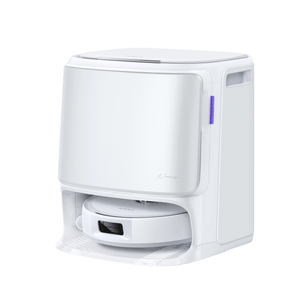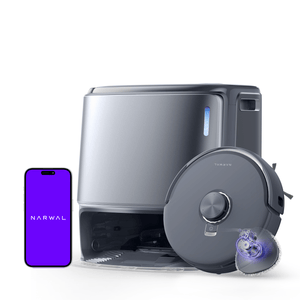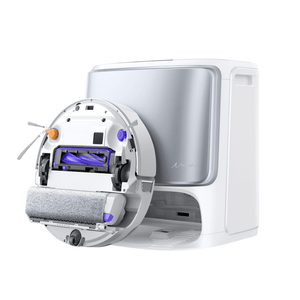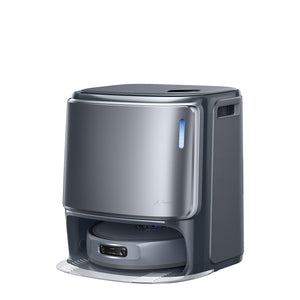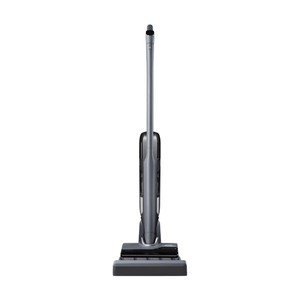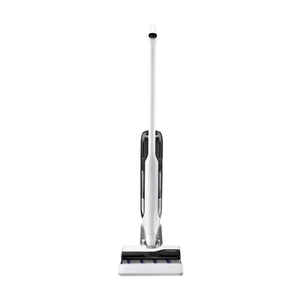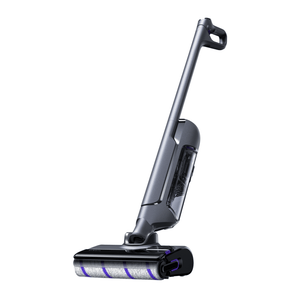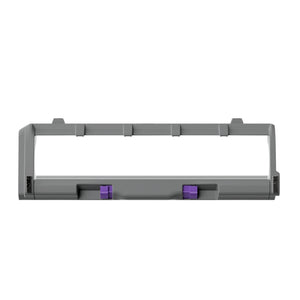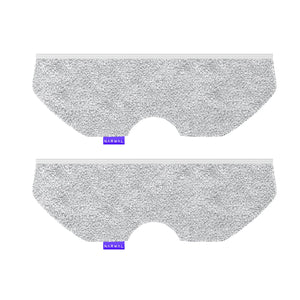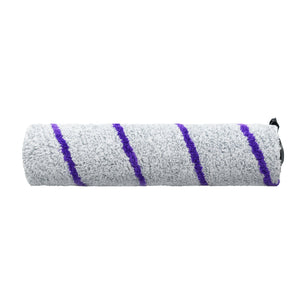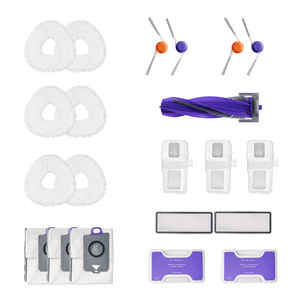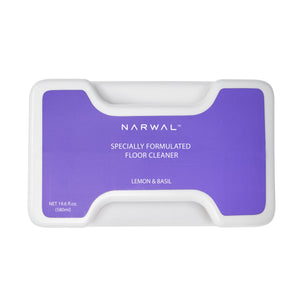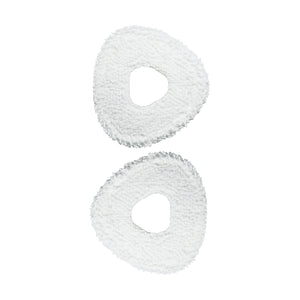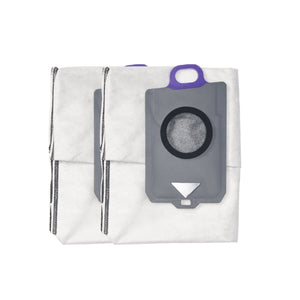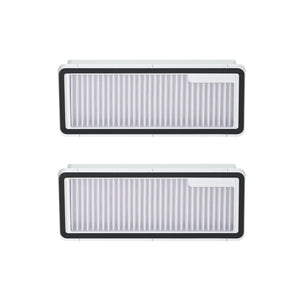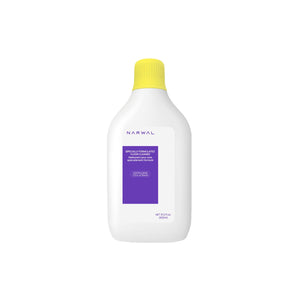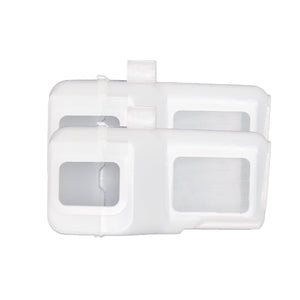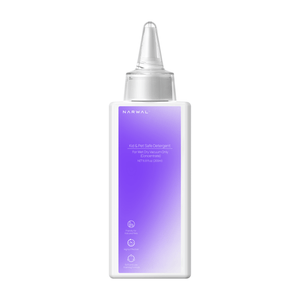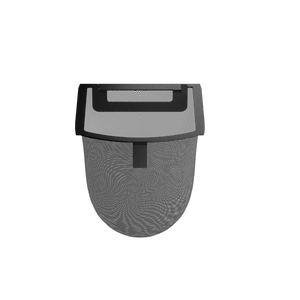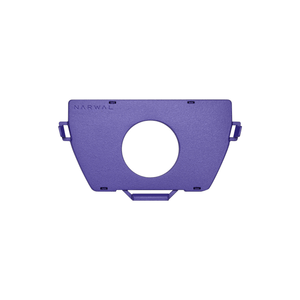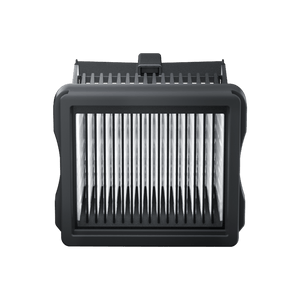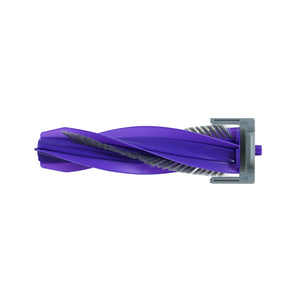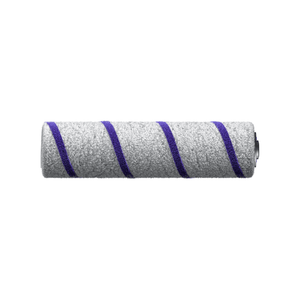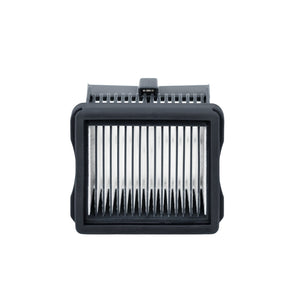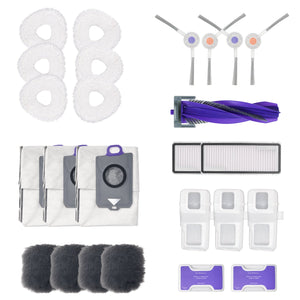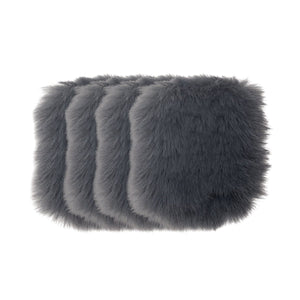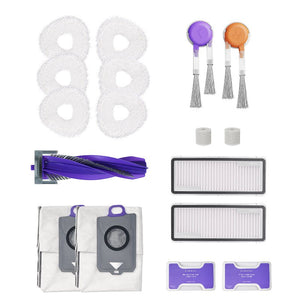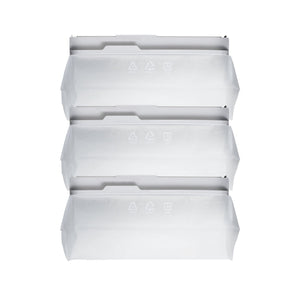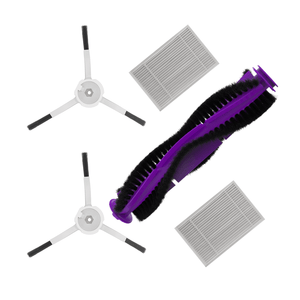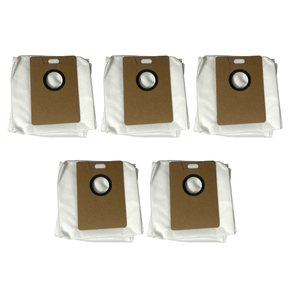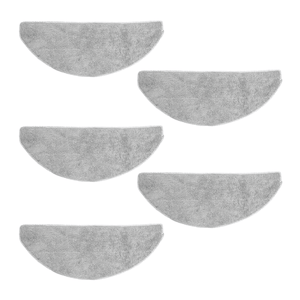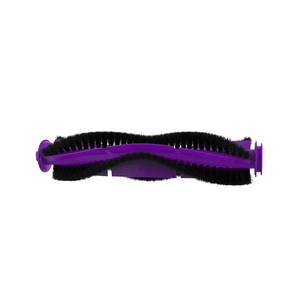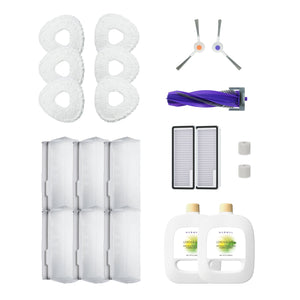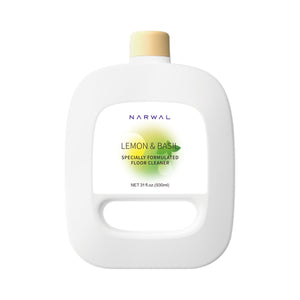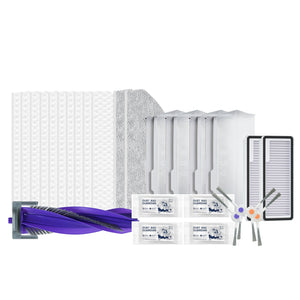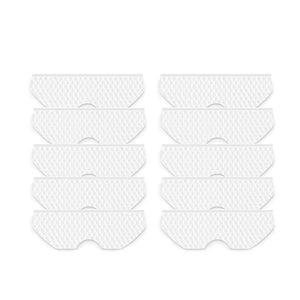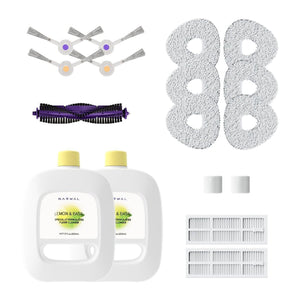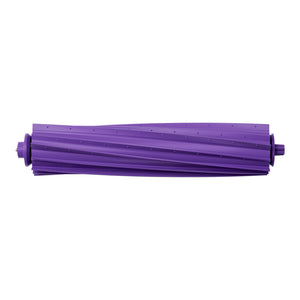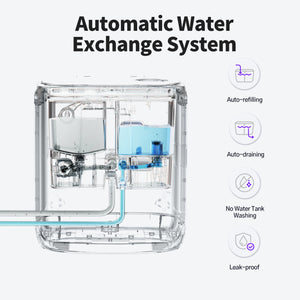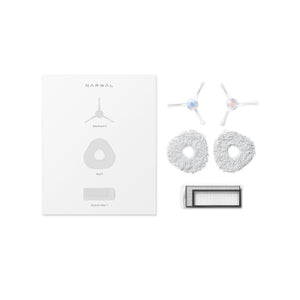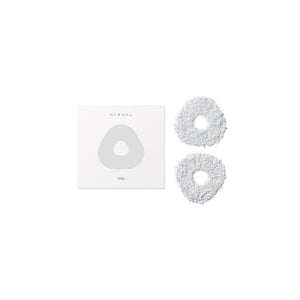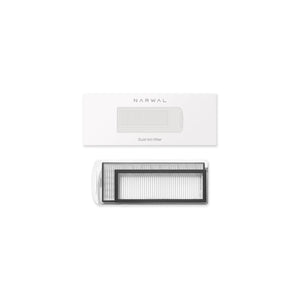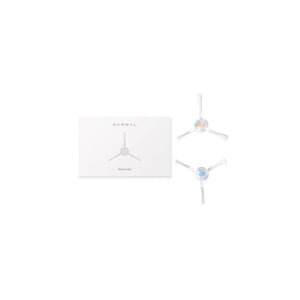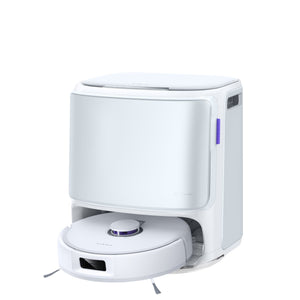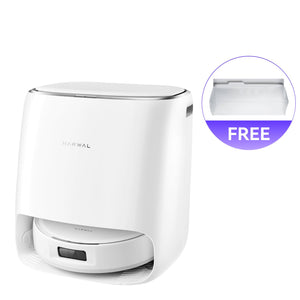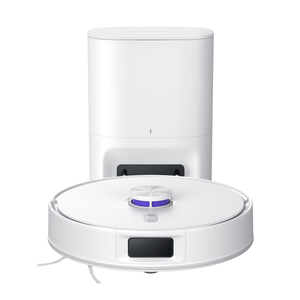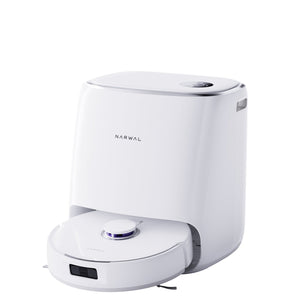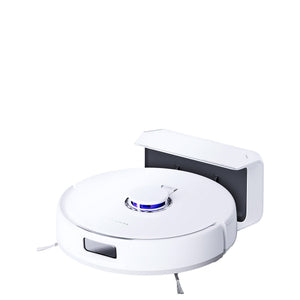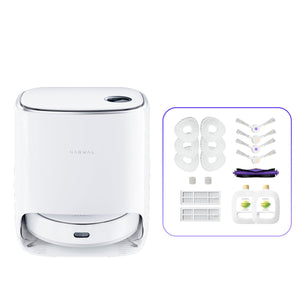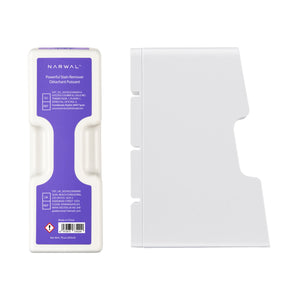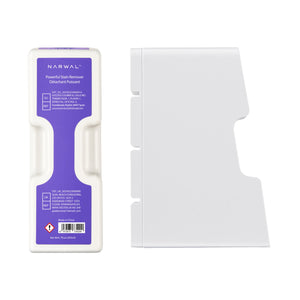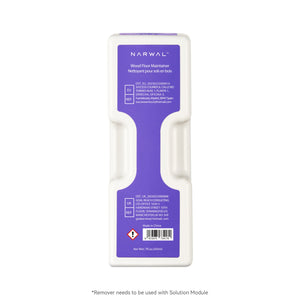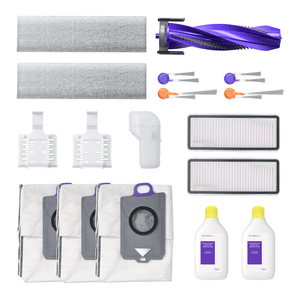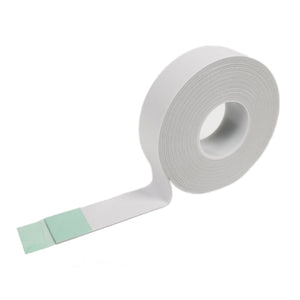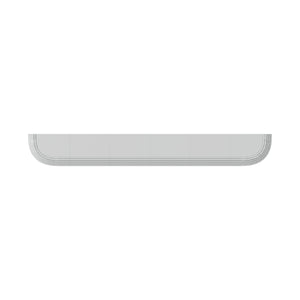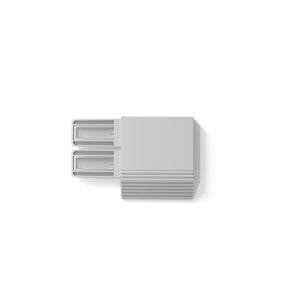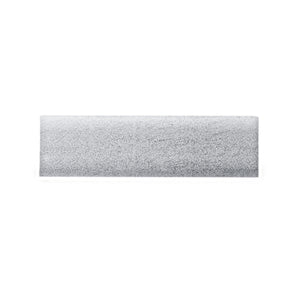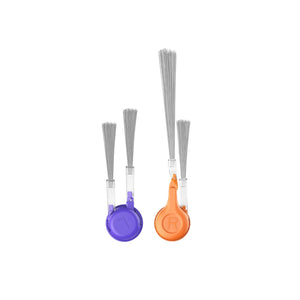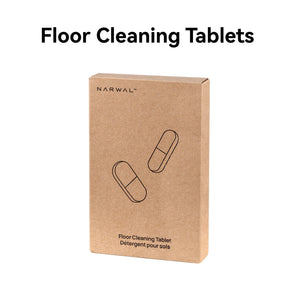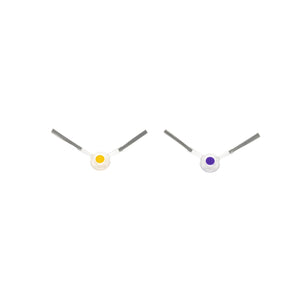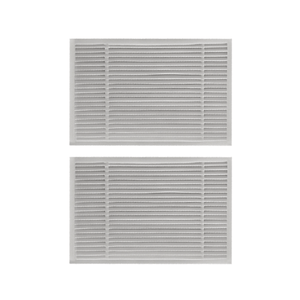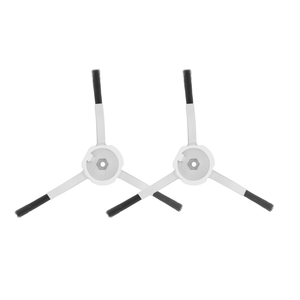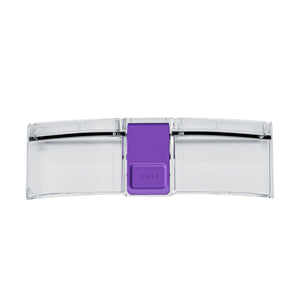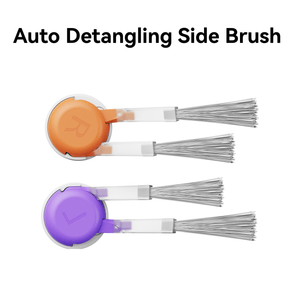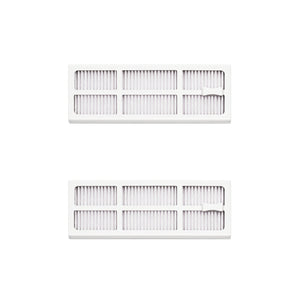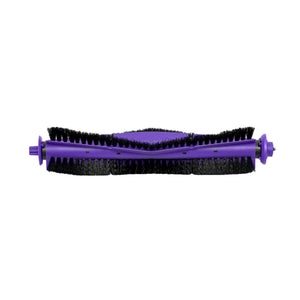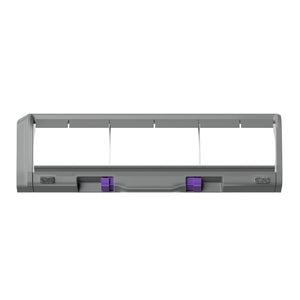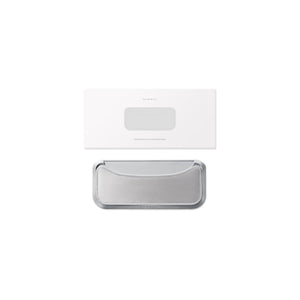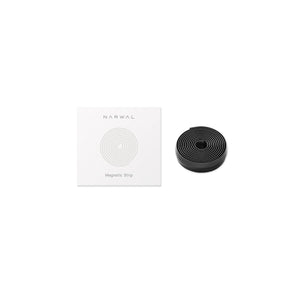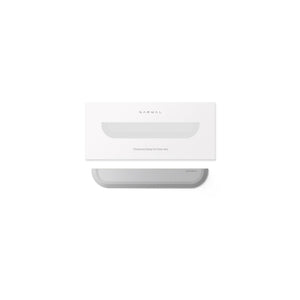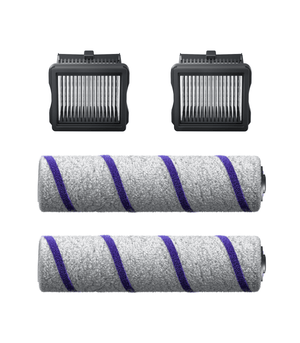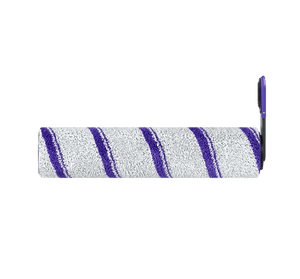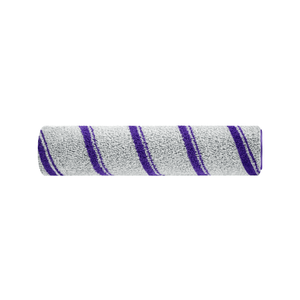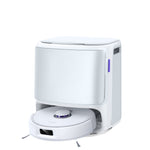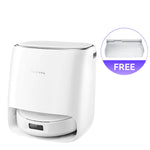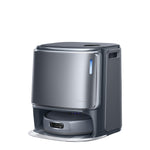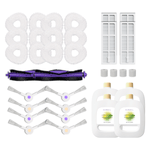Let’s be honest—cleaning isn’t the most exciting task, but having the right vacuum can make it a whole lot easier. Whether you’re battling pet hair, crumbs, or just everyday dust, the right vacuum can save you time and effort. But with so many options out there, how do you know which one’s right for you?
That’s where we come in! In this guide, we’ll break down the different types of vacuums—from classic uprights to smart robots—and help you figure out which one fits your home and lifestyle. By the end, you’ll know exactly what to look for.
What to Consider
-
Your home size: Are you cleaning a cozy apartment or a spacious house?
-
Your floors: Do you have carpets, hardwood, or a mix?
-
Your cleaning needs: Are you looking for deep cleaning or quick touch-ups?
-
Your lifestyle: Do you want something hands-on or fully automated?
Ready to find your perfect match? Let’s dive in!

The 7 Main Vacuum Types at a Glance
Quick comparison: here’s how the main vacuum types stack up before we dive deeper.
|
Type |
Best For |
Pros |
Cons |
|
Upright |
Deep carpet |
Strong agitation; wide path |
Heavy; stairs unfriendly |
|
Canister |
Mixed floors or stairs |
Maneuverable; many tools |
Hose and canister to store |
|
Stick / Cordless |
Quick daily cleans |
Light; easy grab-and-go |
Shorter runtime; smaller bin |
|
Handheld |
Cars, sofas, or crumbs |
Ultra-portable |
Spot-only |
|
Robot |
Hands-free daily dust |
Automated; smart scheduling |
Not for deep cleaning; clutter limits |
|
Wet / Dry |
Garage or kitchen spills |
Handles liquids and debris |
Bulky; loud |
|
Central |
Large homes |
Quiet; powerful suction |
Installation cost |
High-end robots now add vacuum + mop + self-clean/dry docks for true hands-off care—Narwal Freo series is a good example.
Types of Vacuums by Form Factor and Design
Vacuum cleaners come in a variety of shapes and designs, each tailored to specific cleaning needs, user preferences, and space layouts. Whether you're looking for something portable, powerful, or fully automated, understanding the form factor can help you find the vacuum that best fits your lifestyle.
Upright Vacuums
Upright vacuums are the traditional, all-in-one models most people are familiar with. They combine a motor, suction head, and dustbin in a single vertical unit, offering powerful suction and wide cleaning paths.
Best for: Homes with large carpeted areas or open spaces where deep cleaning is needed.
Pros: Strong suction, wide coverage, easy to store vertically.
Cons: Bulky, heavy, less maneuverable in tight spaces.
Canister Vacuums
Canister vacuums separate the motor and dustbin into a wheeled base, connected to a cleaning head via a hose. This makes them more flexible and easier to handle in hard-to-reach areas.
Best for: Multi-surface cleaning, stairs, and detailed work like upholstery.
Pros: Versatile, easy to maneuver.
Cons: Heavier to carry, takes more storage space.
Stick Vacuums
Slim and lightweight, stick vacuums are ideal for everyday quick cleans. Many models are cordless and rechargeable, offering convenience for small messes.
Best for: Small apartments, hard floors, or fast spot cleaning.
Pros: Lightweight, space-saving, easy to grab and go.
Cons: Less suction power, shorter battery life.
Handheld Vacuums
These compact vacuums are perfect for quick clean-ups and small spaces, like car interiors or furniture.
Best for: Spot cleaning, stairs, furniture, and cars.
Pros: Extremely portable and easy to use.
Cons: Limited battery life and dust capacity.
Robot Vacuums
Robotic vacuums automate your cleaning routine by navigating and cleaning floors on their own. Some models include mopping features, HEPA filters, and smart mapping with LiDAR. Modern designs also embrace the eco vacuum cleaner concept—using less energy, minimizing waste with washable components, and intelligently adjusting cleaning patterns to conserve resources.
Best for: Daily maintenance, pet hair, and hands-free cleaning.
Pros: Fully automated, great for routine cleaning.
Cons: Not ideal for deep cleaning or cluttered spaces.
Most robot vacuums are designed in a round shape, which helps them navigate smoothly around furniture and obstacles. However, square or D-shaped models are increasingly popular for their ability to clean corners and edges more thoroughly.
Backpack Vacuums
Often used in commercial settings, these vacuums are worn like a backpack, keeping your hands free and improving mobility during cleaning.
Best for: Large commercial areas, offices, or schools.
Pros: Highly portable, efficient for large spaces.
Cons: Physically demanding to wear for long periods.
Central Vacuum Systems
Built into the home, central vacuum systems provide powerful suction via wall inlets connected to a central motor. They’re quiet and convenient once installed.
Best for: Large homes, multi-level houses, and new construction.
Pros: Quiet, powerful, long-lasting.
Cons: High initial cost, complex installation.
Upright VS Canister: Which Is Better?
Upright: stronger carpet agitation and wide heads.
Canister: better maneuverability on stairs or hard floors with more tools.
Choose upright for deep carpets; canister for multi-surface flexibility.
Types of Vacuums Based on Functionality
When choosing a vacuum cleaner, it’s essential to consider the type of surfaces or specific cleaning needs it will address. Different vacuum types are designed to tackle different challenges, from carpet fibers to hardwood floors, or even pet hair. Below, we’ll explore the various vacuum types, their features, advantages, and best use cases.
Carpet-Specific Vacuum Cleaners
Carpet-specific vacuum cleaners are built with powerful suction and specialized brush heads designed to reach deep into carpet fibers. These vacuums are excellent for tackling dust, dirt, and debris that settle deep within the carpet, providing thorough cleaning for homes and businesses with carpeted areas.
-
Advantages: The primary benefit of carpet-specific vacuums is their ability to remove dust, dirt, and pet hair embedded in carpet fibers, ensuring a deeper clean. The strong suction helps lift debris from the base of the carpet, keeping your floors fresh and clean.
-
Disadvantages: However, they tend to be less effective on hard floors. The brush heads, which are designed for carpets, might scratch or push debris around on smoother surfaces like tile or hardwood.
-
Best for: Carpeted homes, offices, or commercial spaces where deep carpet cleaning is a priority.

Hard Floor-Specific Vacuum Cleaners
Designed for hardwood floors, tiles, and other smooth surfaces, hard floor-specific vacuums provide an efficient cleaning solution without causing damage. These vacuums typically feature soft brushes or suction-only capabilities to avoid scratching delicate surfaces while maintaining high suction power for dust and dirt removal.
-
Advantages: Hard floor vacuums are optimized to clean efficiently without leaving marks or scratches, making them ideal for homes or commercial spaces with hardwood, tiles, or vinyl flooring. They tend to perform exceptionally well on these surfaces, offering a quick and effective clean.
-
Disadvantages: The downside is that these vacuums are not suitable for cleaning carpets, as they lack the deeper brush mechanisms needed to tackle dirt embedded in fibers.
-
Best for: Homes or businesses with hard flooring who need a vacuum that provides gentle yet powerful cleaning without damaging surfaces.
Pet Hair-Specific Vacuum Cleaners
For pet owners, a vacuum specifically designed for pet hair is a must-have. These vacuums come with specialized brushes and filtration systems to capture hair and dander, which can otherwise be difficult to remove from upholstery, carpets, and floors. They ensure that pet owners can manage the shedding and allergens that often accompany pets.
-
Advantages: The key benefit is their ability to efficiently pick up pet hair, as well as other allergens like pet dander. The added filters also help reduce allergic reactions, making these vacuums ideal for sensitive environments.
-
Disadvantages: These vacuums may require more frequent emptying of the dustbin due to the large amount of hair they collect, especially in homes with multiple pets.
-
Best for: Pet owners who need a vacuum that can effectively clean hair, dander, and allergens from various surfaces.
Multi-Function Vacuum Cleaners
For homes or offices with multiple types of flooring, a multi-function vacuum cleaner offers a versatile solution. These vacuums are designed to work on a range of surfaces, from carpets and rugs to hardwood floors and tiles, providing flexibility for mixed-use spaces.
-
Advantages: The most significant advantage of multi-function vacuums is their versatility. With adjustable settings and interchangeable heads, they can easily transition from carpet to hard floors and back, making them suitable for spaces with various surface types.
-
Disadvantages: Although they offer broad functionality, multi-function vacuums may not perform as well as specialized models on specific surfaces. For instance, they might not be as effective at deep carpet cleaning or precise hard-floor care.
-
Best for: Mixed-floor homes or commercial spaces where multiple surface types need to be cleaned with a single machine.
Dusting Robots: Verified for Healthier Homes
Dusting robots do more than pick up visible debris — they also target fine particles and allergens. To evaluate their performance, focus on measurable features:
-
HEPA or high-efficiency filters (H13/H14) to capture microscopic dust and pollen.
-
Self-emptying, self-washing, and drying docks that reduce direct contact with dust and allergens.
These robots are ideal for everyday maintenance and air-quality improvement. However, remember: they’re best for daily dust control — not for deep scrubbing or stubborn stains.

By choosing the right type of vacuum for your specific needs, you can ensure optimal performance and efficiency in your cleaning routine. Whether you’re dealing with carpet, hard floors, or pet hair, there's a vacuum that fits your requirements.
What Are the Main Types of Vacuum Cleaners?
There are 7 main types: upright, canister, stick/cordless, handheld, robot, wet/dry, and central. Uprights deep-clean carpets; canisters handle mixed floors; sticks suit quick cleanups; handhelds target spots; robots automate daily dust; wet/dry units tackle spills; central systems fit large homes.
Which Vacuum Is Best for Hardwood Floors?
Use a vacuum with a soft roller or brush-off, sealed suction, and strong edge pickup. Stick or canister heads for bare floors work well. Robot vacuums with mopping add daily dust removal and shine.

Types of Vacuums Based on Cleaning Method
Vacuum cleaners are designed to handle different types of cleaning tasks, from dry debris to liquid spills. Depending on the cleaning needs and the environment, the method of cleaning varies significantly. Below, we explore the different types of vacuums based on their cleaning method, highlighting their features, advantages, and ideal use cases.
Dry Vacuums
Dry vacuums are designed solely for handling dry debris, such as dust, dirt, and crumbs. These are the most common type of vacuum cleaners, typically used for everyday household cleaning. They are simple to use and efficient for quick cleaning tasks.
-
Advantages: Dry vacuums are fast, efficient, and straightforward to operate. They are ideal for regular cleaning around the house and work well on carpets, rugs, and hard floors. Their simplicity and ease of maintenance make them a popular choice for general cleaning.
-
Disadvantages: Dry vacuums cannot handle liquid spills or wet messes, so they are unsuitable for environments where liquid cleanup is required.
-
Best for: General household cleaning tasks, including living rooms, bedrooms, and kitchens, where only dry debris is present.
Wet/Dry Vacuums
Wet/dry vacuums are more versatile than their dry-only counterparts. These vacuums can handle both liquid spills and dry debris, making them a great option for environments where both types of messes are common. They are often used in more industrial or commercial settings but can also be useful in homes with heavy-duty cleaning needs.
-
Advantages: The main advantage of wet/dry vacuums is their ability to handle both liquid and solid messes. Whether it's spilled water, food, or dry dirt, these vacuums can tackle a wide range of cleaning tasks. They are ideal for environments like workshops, kitchens, or garages, where liquid and debris may mix.
-
Disadvantages: Wet/dry vacuums tend to be bulkier and louder than dry-only models, which can make them less convenient for residential use. They also require more maintenance due to the nature of handling wet messes, and they can be harder to store due to their larger size.
-
Best for: Kitchens, restaurants, workshops, garages, and other areas that need to handle both liquid and solid messes.

Vacuum and Mop Combo
These hybrid systems—often marketed as 2-in-1 robot vacuums, all-in-one vacuum and mop models, or even 3-in-1 robot vacuums—combine the functions of a vacuum cleaner and a floor mop in one device. They allow users to vacuum up dirt and debris while simultaneously mopping up light liquid spills, providing a comprehensive cleaning solution in one step.
Advantages: The primary benefit of these multi-functional systems is the efficiency they offer, particularly for hard floors. With the ability to vacuum and mop simultaneously, they save time and improve overall cleaning performance. Some 3-in-1 robot vacuums even include additional features like self-drying or automatic dust disposal, adding extra convenience for busy households.
Disadvantages: While these systems improve cleaning efficiency, their mopping capability may not be as powerful or thorough as a dedicated floor mop. They are better suited for daily maintenance and light spills rather than deep cleaning tasks.
Best for: Homes or businesses looking for a time-saving, all-in-one cleaning device—especially effective for maintaining cleanliness on hard floors with minimal effort.
Are Vacuum-Mop Combos Worth It?
Yes, for daily maintenance on hard floors. They vacuum dust while mopping light films in one pass. They don’t replace deep scrubs, but 3-in-1 robots with self-clean/dry docks reduce upkeep and exposure to dust.
Types of Vacuums Based on Technology
Advancements in technology have revolutionized the vacuum cleaner market, leading to the development of various models that incorporate specialized technologies for improved performance, convenience, and efficiency. Below, we explore different types of vacuums based on their technological features, detailing their functions, benefits, and ideal usage scenarios.
Cyclonic Vacuums
Cyclonic vacuums use cyclonic separation technology to spin air at high speeds, which creates centrifugal forces that separate dirt and dust from the airflow. This method prevents the dirt from clogging the filter, allowing for longer-lasting suction power.
-
Advantages: One of the key benefits of cyclonic vacuums is their sustained suction power, which ensures efficient cleaning over a longer period. Since dirt is separated from the air, these vacuums reduce the chances of the filter becoming clogged, improving overall performance.
-
Disadvantages: Cyclonic vacuums tend to be noisier than other types of vacuums due to the high-speed air movement. Additionally, they can be more expensive compared to traditional vacuum models.
-
Best for: Environments where powerful, continuous suction is required, such as commercial spaces or homes with heavy cleaning needs.
HEPA Vacuums
HEPA (High-Efficiency Particulate Air) vacuums are equipped with HEPA filters, which are capable of trapping microscopic particles, including dust mites, pet dander, pollen, and other allergens. These filters ensure that even the smallest particles are captured, improving indoor air quality.
-
Advantages: HEPA vacuums are highly beneficial for individuals with allergies or respiratory conditions, as they help reduce allergens in the air. They are also effective at improving overall indoor air quality by trapping airborne particles and preventing them from being released back into the environment.
-
Disadvantages: One limitation of HEPA vacuums is that the filters need to be regularly cleaned or replaced to maintain optimal performance. This can add to the maintenance cost and effort.
-
Best for: Places where air quality is crucial, such as hospitals, labs, or homes with allergy sufferers, to ensure a clean and healthy living environment.

Smart Vacuums
Smart vacuums, often robotic models, are equipped with advanced features such as mapping technology, Wi-Fi connectivity, and smartphone control. These vacuums can automatically navigate your home, mapping out areas for efficient cleaning and allowing users to schedule cleaning sessions remotely.
While many smart vacuums rely on Wi-Fi connectivity and app control, some models are designed for users who prefer a simpler setup. Options like robot vacuums without Wi-Fi or those operated with a remote control offer basic automation without requiring a smartphone, making them ideal for less tech-savvy users or privacy-conscious households.
-
Advantages: The main advantage of smart vacuums is their convenience. With features like app control and automated scheduling, users can set cleaning tasks without having to be present. They also offer customizable cleaning modes, such as focusing on specific rooms or areas that need more attention.
-
Disadvantages: Smart vacuums tend to be on the pricier side, and their reliance on technology can sometimes lead to glitches or technical issues. They may also not be as powerful as traditional models, especially in deep cleaning tasks.
-
Best for: Busy households or individuals who want a hands-off cleaning solution that can be customized and operated remotely for regular maintenance without constant supervision.
Lidar Robot Vacuums
Some smart vacuums are equipped with lidar (Light Detection and Ranging) technology, enabling them to map your home with remarkable precision. These lidar robot vacuums use laser sensors to scan surroundings in real time, creating accurate floor plans and avoiding obstacles with ease. Compared to gyroscope- or camera-based models, lidar vacuums offer more reliable navigation, especially in low-light conditions or complex layouts.
Best for: Homes with intricate layouts, multiple rooms, or obstacles where precise navigation is essential.
Robot Vacuums with Docking & Self-Emptying Features
Many of today’s advanced robot vacuums come equipped with docking stations that do more than just recharge the device. A robot vacuum with docking station can automatically return to its base after cleaning, and high-end models include self-emptying features that transfer collected debris into a larger dustbin located inside the dock.
This hands-free system not only reduces the frequency of manual emptying but also ensures your vacuum is always ready for the next cycle. Some premium docking stations even include mop-cleaning or drying functions, taking automation to the next level.
Real-World Example: Narwal Freo Series
Narwal’s latest robots combine precision navigation and fully automated upkeep. Freo Z10 Ultra pairs LiDAR with dual RGB cameras and on-device AI to identify 200+ objects, clean close to edges, and adapt in real time. Its all-in-one dock self-empties for up to 120 days, self-washes mops with adaptive hot water (finishing at high-temp hygienic rinse), and hot-air dries to prevent odors. For homes prioritizing deep daily care, Flow adds a real-time self-cleaning track mop and 22,000Pa suction, while keeping carpets dry with 12mm mop lift and CarpetFocus sealing.
[cta:narwal-freo-z10-ultra-robot-vacuum-mop]
Advantages: Saves time, minimizes maintenance, and is ideal for allergy-sensitive households by reducing dust exposure.
Disadvantages: Higher cost and bulkier footprint compared to simpler models.
Best for: Busy users, large households, or anyone looking for maximum convenience from their robot vacuum setup.
Robot Vacuum Types: A Complete Breakdown
Robot vacuums vary widely in functionality, intelligence, and design. Here’s a quick overview of the main types:
-
By Functionality:
-
Vacuum-only: Basic models for dry debris
-
2-in-1 vacuum & mop: Dual-action cleaning
-
3-in-1 with mop drying: Adds self-cleaning/drying features
-
By Navigation:
-
Gyroscope: Random paths, budget-friendly
-
Camera-based: Visual mapping, light-sensitive
-
Lidar-based: Precise laser navigation
-
Hybrid AI: Combines lidar + camera + AI obstacle avoidance
-
By Control & Intelligence:
-
Manual or remote control: For simplicity
-
App & voice control: Smart home compatible
-
AI-enhanced: Learns habits, adjusts cleaning based on dirt
-
By Use Case:
-
Pet-focused: Tangle-free, strong suction
-
Allergy-specific: HEPA filtration
-
Compact for small spaces
-
Multi-floor memory
-
Self-emptying for shared/public areas
These types often overlap. For example, a high-end model may be a 3-in-1 with AI mapping and self-emptying features. Understanding these differences helps you choose the best match for your space and needs.
Robot Vacuum Types at a Glance
|
Robot Type |
Navigation |
Dock |
Best For |
|
Vacuum-only |
Gyro / Basic |
Charging dock |
Light daily dust |
|
2-in-1 Vac & Mop |
Camera or LiDAR |
Charging dock |
Hard floors, daily maintenance |
|
3-in-1 (Vac + Mop + Dry/Clean) |
LiDAR or Hybrid AI |
Self-empty, self-wash, and dry dock |
Busy homes, pets, and allergy-sensitive users |
Modern 3-in-1 robots combine vacuuming, mopping, and self-clean/dry functions, offering a fully automated cleaning experience. The Narwal Freo series is a great example—powered by LiDAR navigation, AI obstacle detection, and hands-free dock maintenance.

Types of Vacuums by Use
Different spaces and lifestyles require different vacuum types. From compact home models to industrial-grade machines, each type serves a distinct cleaning purpose. Below is a clear breakdown of how to choose the right vacuum by environment and real-life use cases.
Home Use
Home vacuums are compact, versatile, and designed for daily household cleaning. They balance suction power, convenience, and quiet performance—perfect for apartments, condos, or family houses.
Best options include stick vacuums, robot vacuums, and multi-surface upright models that can transition between carpets and hard floors easily.
Common Home Scenarios include:
• Pets: For pet owners, strong suction and anti-tangle brushrolls are essential to pick up hair and dander efficiently. Choose models with sealed HEPA filtration and, ideally, self-emptying docks to reduce maintenance and allergens.
• Allergies: For allergy-prone households, look for fully sealed systems and HEPA H13 or H14 filters that trap fine particles and dust mites. Robot vacuums with self-washing or drying docks help minimize direct contact with allergens.
• Mixed Floors: If your home combines carpets, hardwood, and tiles, choose a vacuum with automatic brush adjustment and soft rollers to protect delicate surfaces. Smart mapping ensures consistent coverage across different floor types.
• Busy Families: For active households, 3-in-1 robot vacuums that vacuum, mop, and dry automatically are the best choice. Features like resume cleaning, multi-floor memory, and self-cleaning docks save time and ensure a truly hands-free experience.
Real-World Example: Narwal Freo Series
If “hands-off but thorough” is the goal, Freo Z Ultra and Freo Z10 Ultra deliver true set-and-forget care: LiDAR+AI obstacle avoidance, targeted edge coverage, and docks that self-empty, self-wash with temperature-controlled cycles, and hot-air dry the system so it stays fresh between runs. Resume cleaning, multi-floor maps, and app/voice control make whole-home upkeep simple—even with pets, kids, and mixed flooring.
[cta:narwal-freo-z-ultra-robot-vacuum-mop]
Commercial Use
Commercial vacuums are built for frequent, heavy-duty use in offices, hotels, restaurants, and retail spaces. They offer higher suction power, durable materials, and larger dust containers to handle constant cleaning.
Best options include canister or backpack vacuums with extended hoses and multiple attachments for fast and efficient cleaning in high-traffic areas.
Industrial Use
Industrial vacuums are designed for extreme cleaning conditions such as factories, warehouses, and construction sites. They can handle large debris, fine dust, and even liquids or hazardous materials.
Best options include wet/dry and heavy-duty canister vacuums that deliver maximum suction power, durability, and capacity for demanding environments.

How to Choose the Right Vacuum Cleaner
Selecting the right vacuum cleaner for your home or business can seem overwhelming, but considering a few key factors can help make the decision easier. From the type of flooring in your space to your specific cleaning needs, here are some essential aspects to consider when choosing the perfect vacuum.
Consider the Floor Type: Carpet, Hardwood, Tile, or Mixed Surfaces
The type of flooring in your home or business will significantly influence the type of vacuum cleaner you need.
-
Carpeted floors generally require vacuums with stronger suction and specialized brushes to lift dirt from deep within the fibers.
-
Hardwood floors and tile surfaces benefit from vacuums with softer brushes or non-abrasive heads to avoid scratches, while still providing powerful suction to clean dust and dirt.
-
Mixed surfaces, including combinations of carpets, hardwood, and tile, require a versatile vacuum with adjustable settings or attachments to handle different surfaces effectively.
Assess Cleaning Needs: Daily Maintenance vs. Deep Cleaning
Your cleaning habits and needs will determine whether a standard vacuum or a more powerful model is required.
-
Daily maintenance typically calls for lightweight, easy-to-use vacuums, such as robotic or upright models that are designed for quick pickups.
-
Deep cleaning, on the other hand, necessitates more powerful vacuums with robust suction, such as canister vacuums or those equipped with cyclonic or HEPA technology, for thorough dirt removal and allergen control.
Choose the Level of Automation: Manual vs. Automated Cleaning
Vacuums range from simple, manual models to fully automated robotic devices.
-
Manual vacuums require human effort for operation but tend to provide more power and flexibility. They are ideal for thorough, specific cleaning jobs in various areas of your home or business.
-
Automated vacuums, like robotic models, offer the convenience of hands-free cleaning. These are perfect for regular maintenance but might lack the power needed for deep cleaning or larger debris.

Select the Function Type: Suction Only vs. Vacuum and Mop Combo
Some vacuums specialize in suction only, while others combine multiple functions.
-
Suction-only vacuums are perfect for regular cleaning tasks, handling dust, dirt, and pet hair with ease.
-
Vacuum and mop combo units offer added convenience, especially for hard floors, by allowing you to vacuum and mop simultaneously. These are ideal for dealing with spills or light messes while maintaining cleanliness.
Budget and Long-Term Costs: Initial Price vs. Maintenance Expenses
When shopping for a vacuum, it’s important to factor in both the initial cost and long-term maintenance expenses.
-
Initial cost may vary depending on the type and features of the vacuum, with robotic and industrial models typically being more expensive.
-
Maintenance costs include the cost of replacing parts such as dust bags, filters, or batteries. It’s worth considering how much maintenance a particular vacuum requires before making a decision, as these ongoing costs can add up over time.
Special Features: HEPA Filters, Smart Technology, and Attachments
Some vacuums come with additional features that enhance their performance and convenience.
-
HEPA filters are crucial for those with allergies or asthma, as they capture tiny particles and improve air quality.
-
Smart technology, such as app control or mapping, is a feature of robotic vacuums, offering the convenience of scheduling and customizing cleaning tasks from your phone.
-
Attachments, such as crevice tools, upholstery brushes, or pet hair brushes, can increase a vacuum's versatility, allowing you to tackle a wider variety of cleaning tasks.
By carefully evaluating these factors, you can select the vacuum that best fits your needs, ensuring efficient and effective cleaning for your home or business.
What Is a Good Suction Power?
For full-size uprights or canisters, 100–200 Air Watts (AW) suits most homes. For robots, look at Pa ratings, brush design, and dock features. Always match suction to floor type and debris level.
Conclusion
Choosing the right vacuum cleaner can make all the difference in maintaining a clean and comfortable environment. From powerful cyclonic vacuums for deep cleaning to HEPA models that improve air quality, there’s a solution for every need. Whether you’re looking for hands-free convenience with a robotic vacuum or tackling both dry and wet messes with a wet/dry vacuum, the perfect vacuum is out there waiting for you.
Don’t settle for less—pick the vacuum that fits your lifestyle and cleaning needs. Take charge of your cleaning routine today and discover the model that will make your life easier. Explore the top vacuum recommendations now, and find the one that will revolutionize your cleaning experience!
FAQs:
What key features should I look for when selecting a vacuum?
-
Voltage: Ensure the vacuum has adequate voltage for efficient performance.
-
Current: This indicates the flow of electricity through the vacuum's circuit.
-
Electrical Power: Higher electrical power often correlates with stronger performance.
-
Battery Run Time: For cordless models, verify the duration of the battery life per charge.
-
Airflow: This measures how much air the vacuum can move, which affects its cleaning ability.
-
Suction Power: Choose vacuums with strong suction to efficiently remove dirt and debris.
-
Cleaning Width: A broader cleaning path can shorten the time required to clean large spaces.
-
Weight: Take into account the vacuum's weight, particularly if you have to move it between different floors.
Where should I use a wet/dry vacuum?
Use a wet/dry vacuum in garages, kitchens, workshops, and renovation zones where liquids mix with debris. They handle spills and solids in one pass, but they’re bulkier and louder than standard home vacuums.
Do robot vacuums work on high-pile carpets?
Most robots excel on hard floors and low/medium-pile carpets. For high-pile, look for strong pickup, carpet boost, and automatic mop-lift. Expect robots to maintain between deep upright passes.
Does a higher wattage mean stronger suction power?
Not necessarily. Motor wattage (W or amps) does not equal suction power.
Real cleaning performance depends on multiple factors:
– Air Watts (AW): measures true suction efficiency.
– Sealed airflow design: prevents air leaks and maintains pressure.
– Brush head engineering: affects how well dirt and debris are lifted.
For robot vacuums, look beyond wattage—check Pa rating, brush layout, and dock maintenance system to understand real cleaning performance.
What’s the difference between Air Watts (AW), Pa, and CFM?
AW reflects suction efficiency (useful for uprights/canisters). Pa is pressure (common in robots). CFM measures airflow volume. Real cleaning power is a balance of AW/Pa, airflow path sealing, and brush-head design matched to your floors.
How loud is a vacuum and what’s acceptable?
Most full-size vacuums run 70–80 dB; quiet robots can dip into the 50s. If you clean at night or with pets/kids, look for lower dB ratings plus docks that wash/dry quietly to keep overall maintenance noise down.




